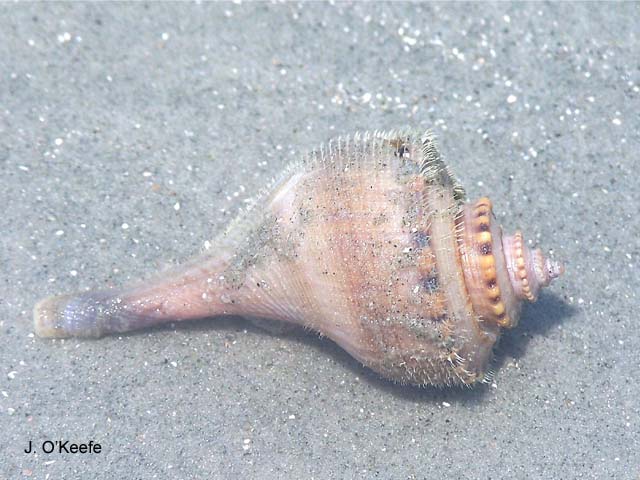| Melongenidae (Melongenas) |
| 20.1 cm DL (male/unsexed) |
|
benthic; brackish; marine; depth range 0 - 114 m |
| Western Atlantic and Eastern Central Pacific: USA; from Cape Cod, Massachusetts to Cape Canaveral Florida (Ref. 101514). Introduced to San Francisco Bay, CA. Subtropical to temperate. |
|
|
| Maximum depth from Ref. 104442. On intertidal flats and seaside lagoons (Ref. 104331). Inhabits sand and sand-mud bottoms, often entirely buried in sediments. Sometimes seen on mussel or oyster beds while foraging. Active at low light, mostly at night during summer months. Both an active predator and scavenger. Capable of readily detecting food in its vicinity (Ref. 101546) by sensing the water the prey pumps out (Ref. 105269). Primarily feeds on bivalves (Ref. 101546) such as mussels and oysters (Ref. 105269). |
|
Not Evaluated (N.E.) Ref. 123251)
|
|
|
Source and more info: www.sealifebase.org. For personal, classroom, and other internal use only. Not for publication.

